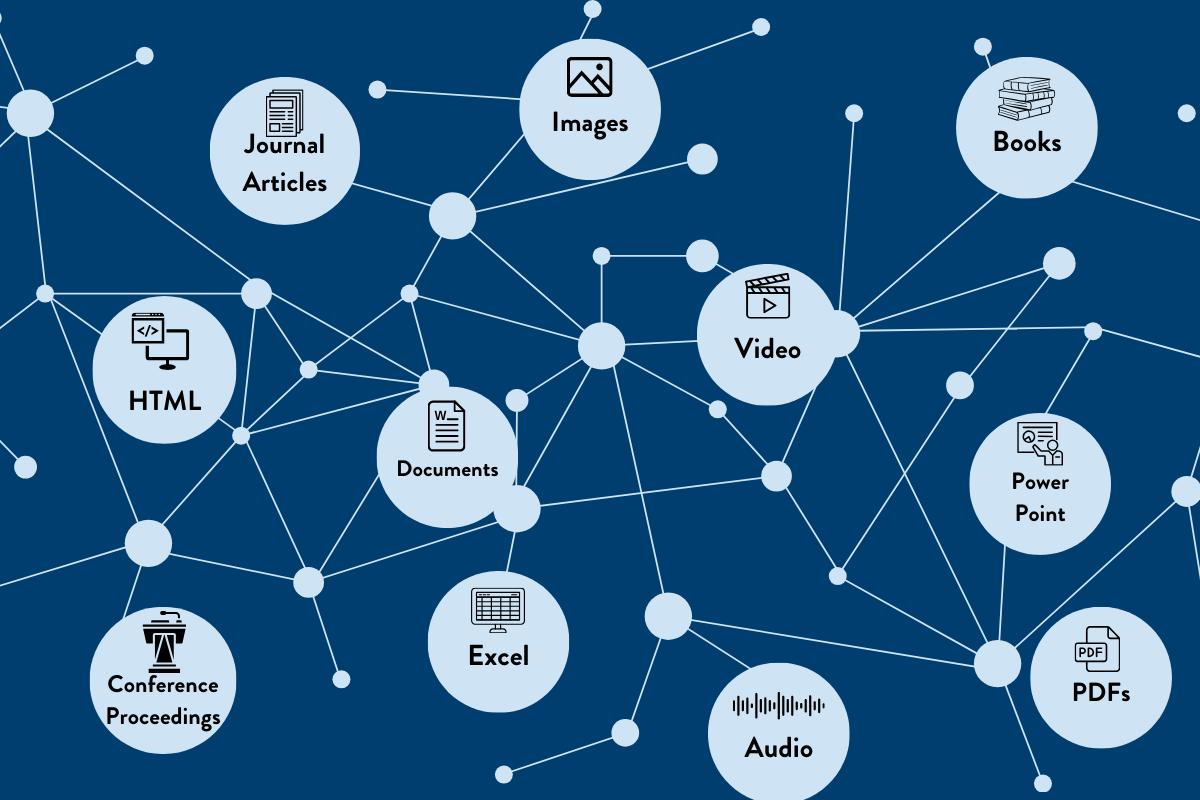Silverchair has long taken an omni-format approach to content, unique across the industry. Our content specs, a subset of the NLM Book Interchange Tag Suite (BITS) and Journal Article Tag Suite (JATS) referred to as SCBITS and SCJATS, make this functionality predictable and efficient so publishers can scale with confidence.
Containerless Content Strategy
When we say ‘containerless’ content, we mean content objects that do not neatly fit into a larger construct such as a journal issue or book volume. Containerless content lives independent of any other content object in time and space.Since containerless content is stored independently of its presentation, it can be used on different platforms without restructuring. This critical distinction from traditional content allows for seamless integration across platforms, improves reusability, and enables omni-format publishing.
A containerless content strategy allows publishers to marry format with function, to improve accessibility, to diversify revenue, and to develop a content strategy that supports organizational goals to expand reach.
The Silverchair Platform supports omni-format publishing with a web of content types:

One important distinction for publishers is that, unlike on other platforms, containerless content is not a diminished component on the Silverchair Platform. Instead, when the publisher delivers complete metadata, containerless content is treated as a "first class citizen" on the platform, meaning that it can be productized, collected, associated, searched, and deposited like any other content object on the platform.
Beyond the many content types we support, we also embrace experimentation and monetization opportunities for semi-structured content. In Silverchair Composer, publishers can expand their corpus of content to include commercial or sponsored content, marketing pieces, blogs, journalistic features, and more.
Why Containerless?
Altogether, the flexibility of our omni-format content offerings is limited only by the strategic imagination of our publishing partners. Containerless content is a key part of our platform development strategy because it supports multiple publisher priorities, including audience strategy, new revenue streams, and future-proofing for AI.Meet your readers where they are
An omni-format approach to content means you’re producing tools for a much wider variety of readers. Imagine video abstracts or high-quality graphics to allow for all types of learners to access the information you’re publishing.A containerless content strategy also improves the accessibility of your content, especially when high-quality metadata extends across these multiple formats. It’s discoverable and easily digested on eReaders and other digitally accessible content platforms.
Diversify revenue opportunities
One of the most exciting areas to explore in today’s containerless or omni-format content is how it can open up new content revenue streams. From sponsored content to content collections produced in partnership with industry partners, the possibilities are endless.This flexibility is especially critical to publisher strategies today, as many seek new forms of sustainability in the face of evolving OA and funder mandates. Thinking about your content revenue streams with alternative or multimedia formats may open up new opportunities for revenue.
Extend your audience beyond the academy
Not every reader who can benefit from your content is reading a full journal article or content proceedings. If part of your mission is influencing or informing the public, then a containerless content strategy is a powerful way forward.Video, audio formats, and presentations could translate advanced journal content to the public in general, or they could target educators, policymakers, journalists, and others. Targeted content formats for different audiences is a tangible demonstration of the mission of many scholarly publishing organizations.
AI outputs will be containerless
As publishers (and Silverchair) explore the opportunities with artificial intelligence, new and exciting developments in dynamic formats are sure to follow. While we don’t know how these innovations will function (can an article be turned into a short video?) we can be confident that they will not be contained in a traditional volume or issue. They will certainly live independently of any known container. Having the preexisting support for these as yet unknown objects will allow publishers to speed to market as quickly as possible.“Containerless” content is a flexible, scalable, and accessible way to expand your content strategy for new markets, new revenue streams, and new potential audiences. As publishers work to meet changing user expectations and product paradigms, an omni-format content delivers the agility you need to thrive in the next era of scholarly publishing.
Read our case studies to learn what other publishers have achieved by bringing all their content together on the Silverchair Platform, or contact us to discuss your omni-format strategies.